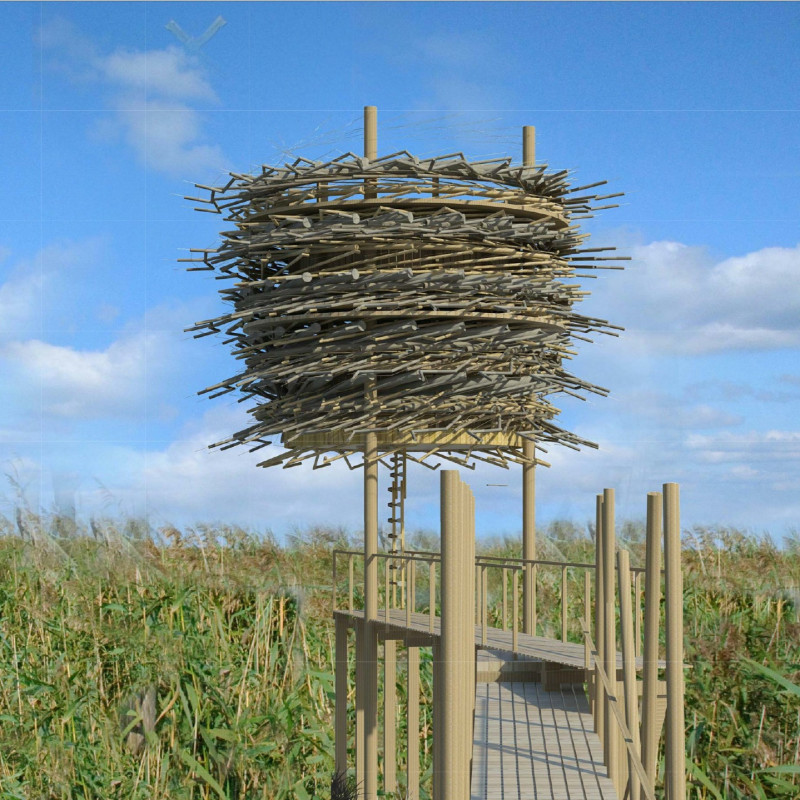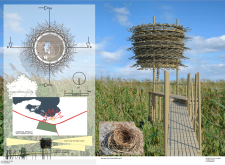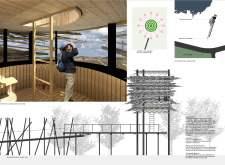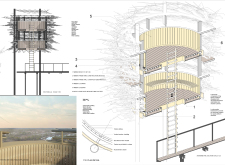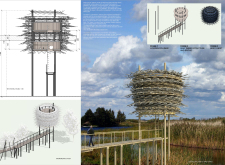5 key facts about this project
### Project Overview
The Bird Observation Tower is strategically situated near a lake, within an expansive marshland, providing a dedicated elevated viewpoint for bird watching. Designed to serve as both an observation point and an educational platform, the structure aims to raise awareness about local avian species and their habitats. The design concept is informed by the organic structure of a bird’s nest, fostering a synthesis between architectural form and the natural environment.
### Spatial Dynamics and User Engagement
The design emphasizes dynamic spatial strategies, incorporating ramps and stairs that invite visitors to ascend and engage with the vista of the surrounding landscape. A circular flow is established throughout the layout, allowing for panoramic views from multiple observation points within the tower. This configuration ensures an uninterrupted visual experience of the local wildlife while fostering a deeper connection between visitors and the natural setting.
### Material Considerations and Sustainability
Material selection is integral to the project’s identity and functionality. The primary use of local timber promotes sustainability while reflecting the natural characteristics of the environment. A metal framework provides the necessary structural support, complementing the timber elements without detracting from the aesthetic coherence with its surroundings. Additional elements such as sealants and glass panes enhance durability and visibility, ensuring that the structure withstands weather conditions while maintaining a strong connection to the outdoor setting.
This approach underscores a commitment to ecological responsibility, employing sustainable materials throughout the construction process and avoiding artificial components. The design's layered and multi-dimensional aspects enhance the immersive experience for users while promoting minimal impact on the surrounding ecosystem.


